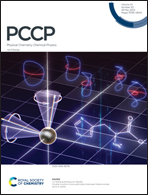The intermolecular polar bond interaction and coupling induced spectral splitting phenomenon for a binary mixture
Abstract
To explain the polarization Raman noncoincidence effect of specific polar bonds and the noncoincidence phenomenon between FT-Raman and FT-IR spectra, aggregation-induced spectral splitting theory was proposed. In this paper, the vibration splitting theory was demonstrated using two strategies: improving the spectral resolution with cryogenic matrix isolation techniques and identifying cases where the coupling splitting is large enough to be distinguishable. The monomer and dimer splitting bands of acetone were detected when cryogenically isolated by the Ar matrix. Additionally, the polarization Raman and two-dimensional infrared spectra of a β-propiolactone (PIL)/CCl4 binary mixture were collected at room temperature, and the spectral splitting phenomenon was clearly observed. The dynamic transformation between the monomer and dimer could be achieved and detected by adjusting the PIL concentration. The observed splitting phenomenon was further confirmed by theoretical DFT calculations based on the monomer and dimer of PIL, as well as the FT-IR and FT-Raman spectra of PIL. Concentration-triggered 2D-COS synchronous and asynchronous spectra also confirmed the splitting phenomenon and the dilution kinetics of PIL/CCl4.

- This article is part of the themed collection: 2023 PCCP HOT Articles


 Please wait while we load your content...
Please wait while we load your content...